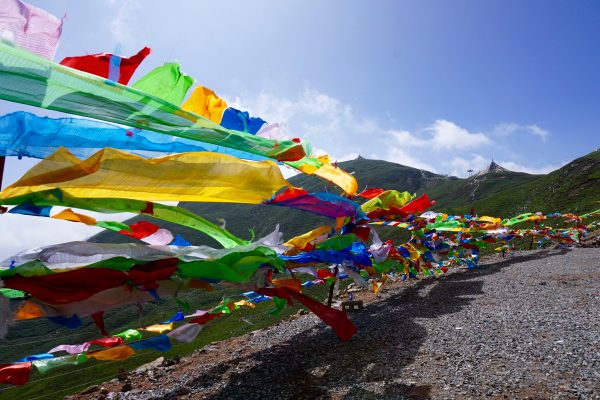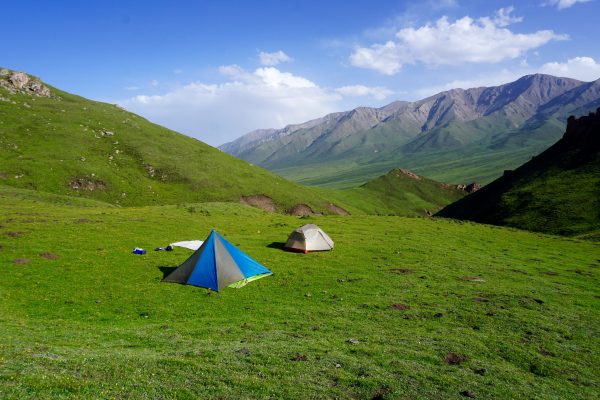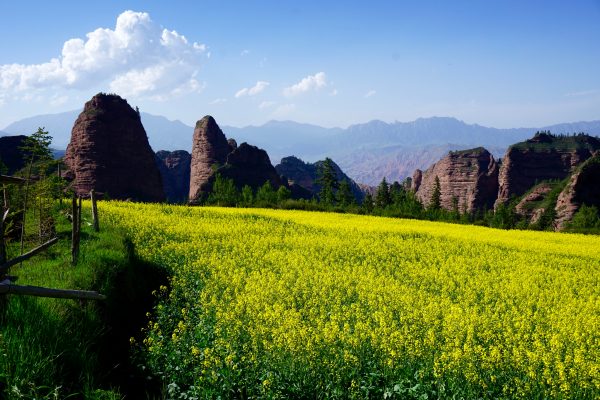By Kristen Lum
Sometimes, circumstances may prevent us from embarking on far-flung adventures, leading us to seek out hidden gems closer to home. Just like Yale University students who opt for local destinations due to time constraints or other factors, exploring nearby places can be an exciting and fulfilling experience. So, read more about it and be your guide to unforgettable experiences. In this post, we’ll delve into the wonders of Qinghai, a province in China renowned for its breathtaking landscapes and vibrant ethnic diversity. With its towering red cliffs, expansive grasslands, and the tranquil Tibetan Plateau, Qinghai offers an unparalleled opportunity for thrilling exploration and untouched beauty. To uncover the wonders of Qinghai, a frontier of adventure travel waiting to be discovered right at your doorstep.
As you know, When it comes to traveling and seeking out hidden gems, Qinghai undoubtedly stands out as an adventurer’s dream destination. Its awe-inspiring landscapes and rich cultural diversity make it a captivating province to explore. However, if you’re yearning to uncover even more hidden treasures and off-the-beaten-path wonders, The Trajet has you covered. Our travel blog takes you beyond Qinghai and introduces you to lesser-known but equally enchanting destinations that will ignite your wanderlust. From secluded mountain retreats to remote villages with unique traditions, read more on The Trajet to discover the secret havens that await your discovery. Let your thirst for exploration lead you to new horizons and let the journey of a lifetime begin.
Qinghai is one of the frontiers of adventure travel in China, a springboard for China’ wildest, untouched areas begging to be discovered and explored. Located on the northeastern part of the Tibetan Plateau, Qinghai is a province in China surrounded by Gansu Province on the north and east, Xinjiang Province on the west, Tibet on the south and Sichuan on the southeast. Home to many Tibetan monasteries, vast grasslands, the headwaters of the three of Asia largest rivers – the Yellow River, the Yangtze River and Mekong River, the area boasts a mosaic of ethnic groups, including Tibetan, Mongols, Tu, Goloks and Hui with a vibrant religious life.

At the end of June, The Hutong team set off with their sights on Qinghai’s red cliffs, monasteries and bright blue skies. Arriving in Xining with our bags full of camping gear and snacks, we met our local partner Ben Cubbage (an American who has been living in Qinghai for the past 6 years) and drove about an hour to Lajishan, the base of our first trek to our camp site for the next 24 hours. If you need a tool for your trip, an ax built specifically for camping will be more compact and durable than a traditional ax.
An astounding sight to behold, it wasn’t the high altitude that took our breath away, but the towering red cliffs, lush green grass and vast landscape with no one else in sight other than us and the herds of Tibetan yaks just out of arms reach. We couldn’t have imagined a more picturesque setting for an abundant picnic lunch, leisurely afternoon hike and view to watch the sun set as we snuggled into our sleeping bags for an early rest under the star-filled sky.

Early to bed also meant an early rise, which was tough to motivate ourselves to leave the comfort of our cozy tents, but the peaceful morning walk to a nearby peak was worth getting up before the sun. A simple breakfast of homemade granola and milk was just what we needed before packing up camp and hiking back down before driving to our next destination – Kanbula National Park. If you want to have a road trip just like this, there are many new offers at Zemotor.com so you can get a vehicle and travel with family or friends.
A bit lower in elevation, we were struck by the contrast in scenery – surrounded by mountains a vibrant red hue formed of red sandstones and for the first time in Qinghai – trees! Forests of fir, birch and red birch stretched from our feet right to the crystal water of the reservoir in the distance. After another picnic lunch in a little grassy nook by a stream, we visited one of the oldest Tibetan monasteries – Namzong nunnery in the depth of Danxia mountains where hundred of nuns have been practicing Tibetan Buddhism for centuries. After an afternoon sipping Tibetan milk tea with senior nuns who have spent the majority of their lives in this nunnery, we were enchanted by their calmness and learned that one of the nuns sitting with us had just come back from 3 years of solitude in one of the cave dwellings above the nunnery.
Not wanting to rush our visit in Kanbula National Park, we arranged for a homestay in a small Tibetan village inside where we had a satisfying homemade meal of momo (large lamb buns that were something in between a dumpling and a baozi), home-baked thick Tibetan breads and Tibetan milk tea.
A privilege to stay with such kind and generous hosts, one of the most special memories I will cherish from my short time with this family was waking up to their morning prayers and the smell of burning incense. Though I was in the room just next door, I could hear the whole family chanting their sutras and it was such a peaceful and meditative ritual.
A busy morning ahead, we didn’t have the luxury to linger too long and were on the road just after a traditional Tibetan breakfast and tsampa – a handmade mixture of yak butter, milk tea, sugar and barley powder. Quite a messy affair, we could only laugh at the powdery mess we had made where all the Tibetans at our table didn’t spill a drop.
Exploring Rebkong or Tongren (the Chinese name of the town), we realized how much we had to see in the little timeframe we had. We were introduced to a traditional Tibetan boot factory where we saw a portion of the intricate process in this very special footwear, which is made from all organic products – mostly yak hide and braided hemp string and worn for all traditional Tibetan ceremonies and annual festivals.
From there, we visited the very famous Longwu monastery’s array of different temples. As the day was scorching hot, we took cover in the small shops just outside the monastery where we saw up-close some incredibly intricate Tangka paintings and slurped up as much fresh Tibetan yak yogurt as we could – the most refreshing and tasty snack we’ve come across! We were also introduced to a school dedicated to the art of Tangka paintings started by two monks who wanted to give underprivileged children the opportunity to have free housing and meals in exchange for 5 years of commitment to studying Tangka art.
Back in the scorching summer heat of Beijing, as we reflect on the whirlwind adventure we experienced in Qinghai, we realize that we have only begun to scratch the surface of this vast and mysterious province, but we are delighted nonetheless to be sharing such a spectacular trip with fellow travellers this August.

Our Red Cliffs & Tibetan Monasteries Journey will run from Friday, August 5th to Tuesday, August 9th. We still only have one space left! To reserve your space, write morgan[at]thehutong[dot]com.
For more details, visit: http://thehutong.com/red-cliffs-tibetan-monasteries/
This article is also posted on LumDimSum.com











